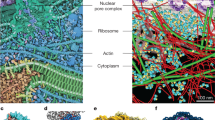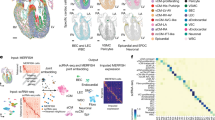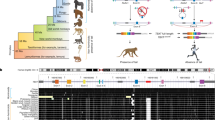Abstract
RECENTLY, some reports have appeared suggesting the existence of an embryonic human hæmoglobin which shows slight differences as compared with the fœtal hæmoglobin of the newborn child. Using an alkali denaturation technique, Drescher and Künzer1 and Allison2, for example, obtained evidence that the hæmoglobin present in early fœtal life is different from the fœtal and adult hæmoglobin types. Recent investigations of Halbrecht and Klibanski3 have shown the existence of an embryonic human hæmoglobin which migrates more slowly in paper electrophoresis than the fœtal hæmoglobin from the cord blood of a newborn child. Studying the problem of fœtal hæmoglobin in newborn goats we obtained evidence that in this animal also two different fœtal hæmoglobins occur, which, however, are still present after birth.
This is a preview of subscription content, access via your institution
Access options
Subscribe to this journal
Receive 51 print issues and online access
$199.00 per year
only $3.90 per issue
Buy this article
- Purchase on Springer Link
- Instant access to full article PDF
Prices may be subject to local taxes which are calculated during checkout
Similar content being viewed by others
References
Drescher, H., and Künzer, W., Klin. Woch., 32, 92 (1954).
Allison, A. C., Science, 122, 640 (1955).
Halbrecht, I., and Klibanski, Ch., Nature, 178, 794 (1956).
Jonxis, J. H. P., and Visser, H. K. A., Amer. J. Dis. Children, 92, 588 (1956).
Huisman, T. H. J., and Prins, H. K., J. Lab. Clin. Med., 46, 255 (1955).
Author information
Authors and Affiliations
Rights and permissions
About this article
Cite this article
HUISMAN, T., VISSER, H. & VAN DER HELM, H. Evidence of a Second Fœtal Hæmoglobin in the Newborn Goat. Nature 180, 758–759 (1957). https://doi.org/10.1038/180758a0
Issue Date:
DOI: https://doi.org/10.1038/180758a0
This article is cited by
Comments
By submitting a comment you agree to abide by our Terms and Community Guidelines. If you find something abusive or that does not comply with our terms or guidelines please flag it as inappropriate.



